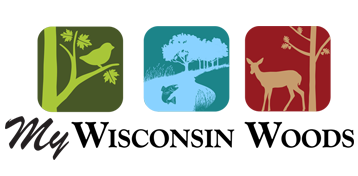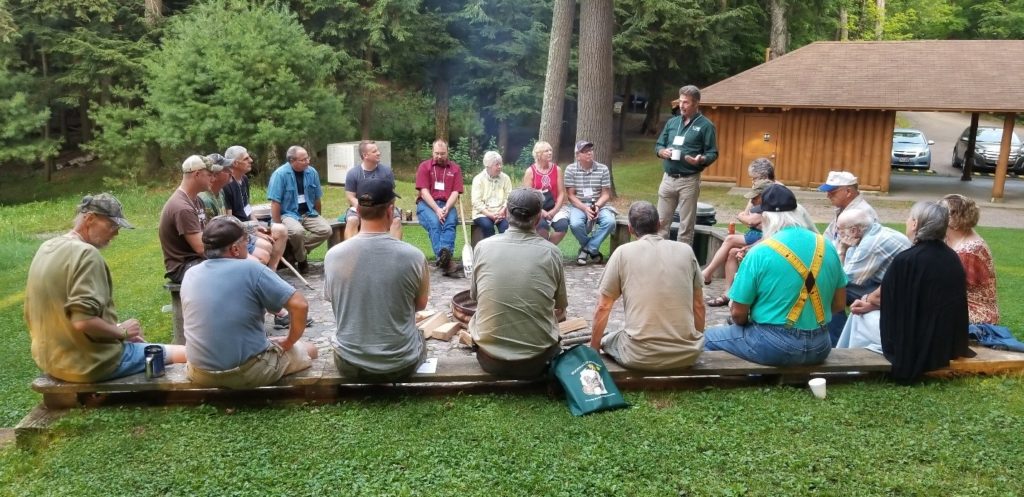
A Conservation Camp for Landowners
There’s a lot to learn about managing woodlands and many ways to do it. One option is jumping into the deep end with the Wisconsin Coverts Project, a woodland wildlife management program for private landowners who want to increase diversity and abundance on their property.
A covert (pronounced kuh’ vert) is a dense thicket that gives shelter to wildlife, and the Wisconsin Coverts Project is aimed at people who want their woodlands to be more healthy and productive, to better care for the wildlife that takes shelter there.
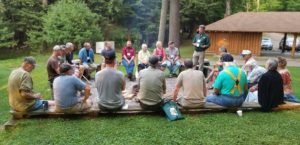
For four days at the University of Wisconsin’s Kemp Natural Resources Station on Lake Tomahawk near Woodruff, August 11-14, participants will take indoor classes on managing everything from large carnivores to woodland songbirds to invasive plants. The classes will be reinforced with fieldwork.
“What makes Coverts unique is that it is a sleep-over workshop,” says Jamie Nack, Extension Senior Wildlife Outreach Specialist at UW-Madison, who helps coordinate the program. “There is absolutely something really valuable in this immersion process.”
“It feels remote at the Kemp Natural Resources Station,” she continues. “There are seven bunk rooms in the lodge. We separate men and women, and you bunk with two to three other adults.”
“We share meals, and everybody takes turns with dish duty. There will be fireside programs and evening socializing. It’s a nice, bonding camp feel among like-minded people.”
Giving Landowners the Big Picture
Kim Zuhlke, president of the Quality Deer Management Association Coulee Country Branch, attended with his wife, Barbara, three years ago. They own land in Monroe County and also manage land for Barbara’s family in Price County. “It’s a special opportunity to learn,” Zuhlke says. “It’s not just the classroom. It’s rubbing shoulders with other landowners while being directed by experts who care.”
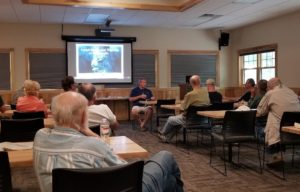
“You can talk to experts with years of experience as well as to landowners like yourself who are thinking about what’s next for them or what has been a challenge, and the ideas they might have about things you might want to do,” says Kim. “Everyone has different property and different goals. You learn about new techniques that people have tried.”
“I got interested in the frogs and toads of Wisconsin. I didn’t have any idea,” continued Kim. “It’s a rite of spring to hear the peepers, but what else is out there making these spring sounds? What’s their habitat and lifecycle, and how do I care for those critters on my land?”
“Coverts taught us how to do a survey of the whole range of animals on our property, both big and little, and I have become more interested in reptiles, amphibians, and songbirds than ever before.”
“Because I’m a grouse hunter I was familiar with the term coverts for game birds, but I didn’t think about the little mammals running around and what kind of birds are nesting in our plum thicket,” says Kim. “This workshop takes a total look at the ecosystem on your property and gives you an appreciation for just how integrated and interdependent it is. As a result of being in Coverts, we enjoy what we’re doing on our land more than ever.”
Sharing What You Learn
“Coverts had a great impact on us,” says Doris Moody, who attended in 2009 with her husband Dale. Dale owns and manages, with other landowners, around 2,000 acres in Iowa and Lafayette counties.
“We are working with state and federal agencies to share what we are learning by hosting workshops,” says Dale. “The first weekend in June we have had people participating in capturing and collaring fawns. This summer we’re planning a workshop to bring foresters out to look at the results of the woods burns we’ve done eight times over the last 20 years.”
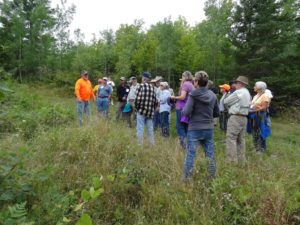
The Wisconsin Coverts Project workshop is offered free of charge. Lodging, meals, and materials are all paid for by workshop sponsors, who include: Wisconsin Sustainable Forestry Initiative (SFI®) Implementation Committee, The Ruffed Grouse Society/American Woodcock Society, University of Wisconsin Extension, UW–Madison Department of Forest and Wildlife Ecology, The Anne and Jason Spaeth Family, and Braun Woodlands.
“If you go through the program,” says Jamie, “there is an expectation that you will develop a sound wildlife management plan for your land, then reach out and share the information and resources provided by Coverts with other landowners. Peer-to-peer learning is important and helps us spread our dollars, time and energy through train-the-trainers programming.”
The Coverts program began in 1994 and has trained 737 landowners to be Coverts Cooperators who have gone on to influence the management of over a million acres in Wisconsin and neighboring states.
How to Apply
Applications are due June 15, but the workshop doesn’t fill based on a first come first served criteria. “The application asks you about your involvement in different organizations, your outreach potential, how comfortable you are with different things, the acreage you own,” Nack explains.
While the average attendee owns 40-60 acres and is involved with environmental activities and organizations, some attendees are not landowners at all but have an opportunity to be trainers and make an impact.
You can download the application here.
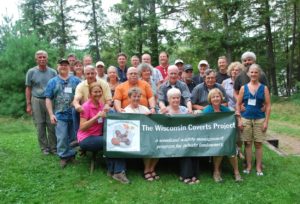
“It’s a journey without an endpoint,” says Kim. “You are continually learning and continually seeing the outdoors in a different perspective. The things I’m doing after attending Coverts are more diverse in the ways I approach habitat and habitat establishment.”
Jon Steigerwaldt is a wildlife biologist at the Ruffed Grouse Society/American Woodcock Society, one of Coverts’ biggest sponsors. He will be teaching at Coverts this year about the value of young forest made up of trees 20 years old or younger.
“The immersive nature of a multi-day learning effort where participants can talk to the resource professionals and other landowners who may be farther along in managing their property made me an instant supporter because I could see this was something different.”
“Coverts paints a complete picture and turns participants into conservationists more rapidly than the traditional methods of going to one seminar here and another talk there and learning piecemeal.”
“It can be difficult to commit to four days,” says Nack, “but when we ask for feedback, people never want us to change the format.”
“Coverts is one of those things that opens your eyes to a whole new set of possibilities,” says Kim. “You will return home with new goals and a greater appreciation for what you can do to enhance the wild and diverse character of a piece of land.”
Written by Denise Thornton, Driftless Landowner and Environmental Blogger for digginginthedriftless.com.
